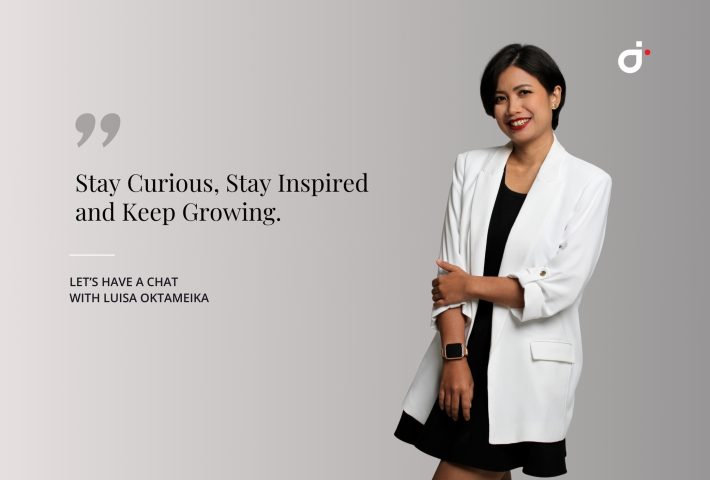
In today’s fast-paced design world, staying grounded in intention while pushing the boundaries of creativity is no easy feat. We recently had the opportunity to speak with Luisa Oktameika Widiaputri, IDI’s Creative Design Manager, about her journey into the world of interior design, specifically within the dynamic and ever-evolving world of office interiors.
Luisa shares her passion for intentional design, the importance of truly understanding clients, and the mindset it takes to thrive in an industry that never stops changing.
1. Can you share your journey in the interior design industry and what inspired you to pursue this career?
I graduated with a degree in Architecture, and early in my career, I worked across several industries. Fortunately, it didn’t take long before I found myself in a company that specialized in office interior design and build. That became my first real introduction to the field, and I was instantly hooked.
What drew me in was how playful and conceptually broad office interior design could be. It wasn’t just about aesthetics. It was about space organization, functionality, and even corporate branding. A well-designed office can tell a company’s story, foster collaboration, and enhance employee comfort. That complexity is what made me curious to explore more, not only within office interiors but across the wider interior design landscape.
2. How do you stay inspired and keep your creative edge in a fast-paced industry? What’s the most overlooked element in interior design, and why does it matter?
Inspiration is everywhere. It’s in people, conversations, experiences, and even challenges. But having a learning mindset is key. You have to stay curious and open to new ideas, always ready to grow.
One element that’s often overlooked in interior design is understanding. We can’t design in isolation. We need to truly understand the client’s needs, their brand identity, their workflow, and how they want people to feel in the space. That deep understanding is what allows us to create designs that are not only beautiful but also functional and full of intention.
3. How do you balance client preferences with your design vision during a project?
It starts with getting the space organization right. Before we even think about colors, materials, or styling, we need to design the flow, the coordination of teams, the zoning of rooms, and how each area connects to the next.
When the foundational layout is functional, it becomes much easier to balance client preferences with our design vision. Collaborating closely with the client on that initial space planning stage is crucial. Once that’s aligned, the rest of the design falls into place more naturally.
4. Can you share a project that challenged your thinking and changed your approach?
Every project brings something new, whether it’s a unique client requirement, a technical limitation, or a tight deadline. Each one teaches me something and pushes me to grow. It’s hard to pick just one because every project becomes a learning experience and, in its own way, a small achievement.
Luisa’s approach to design is thoughtful, intentional, and deeply rooted in understanding her clients. Her perspective reminds us that great design doesn’t just look good. It functions well, supports its users, and communicates something meaningful. We’re excited to see how she continues to push boundaries and bring fresh ideas to the world of interior design.



